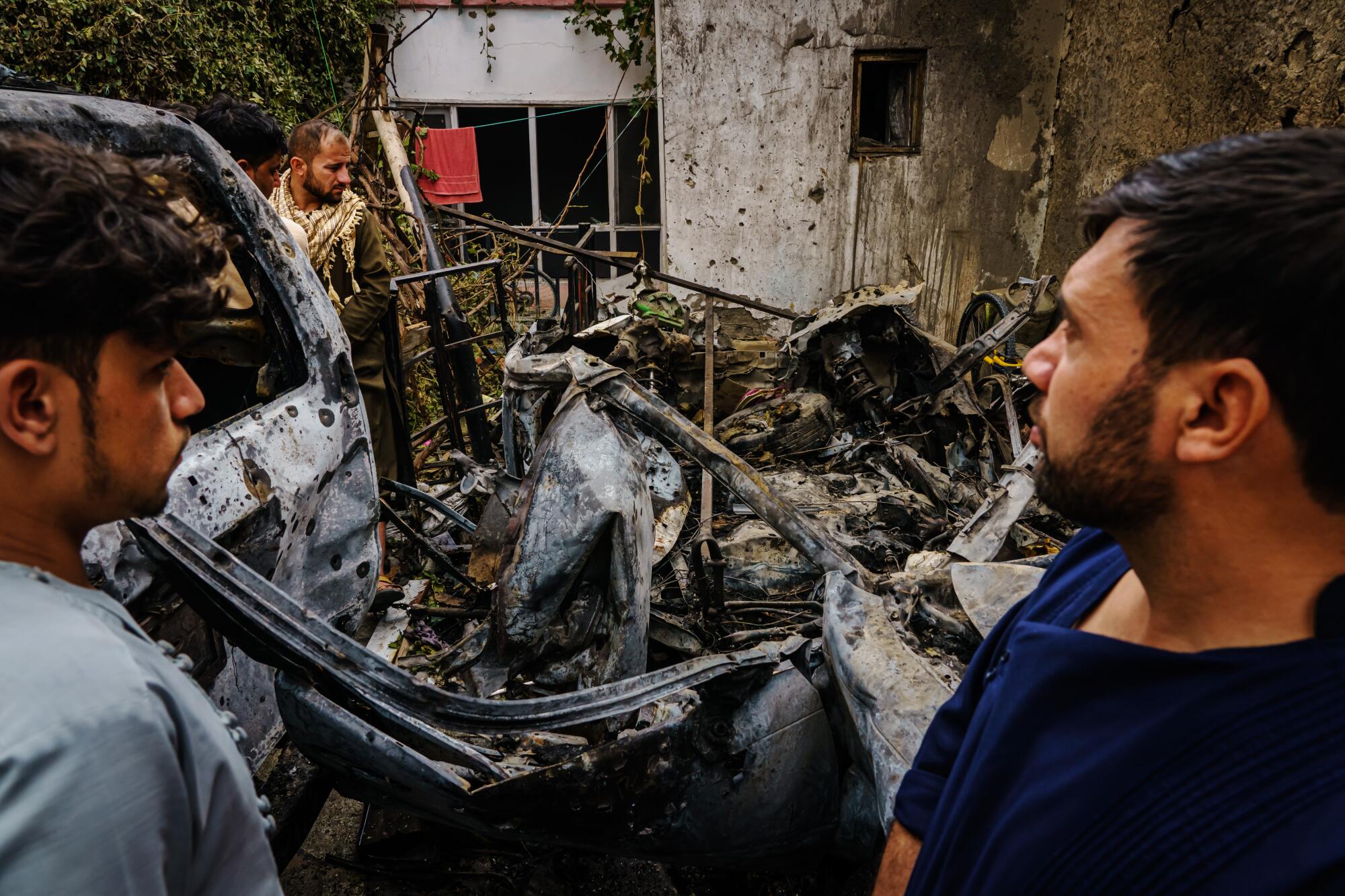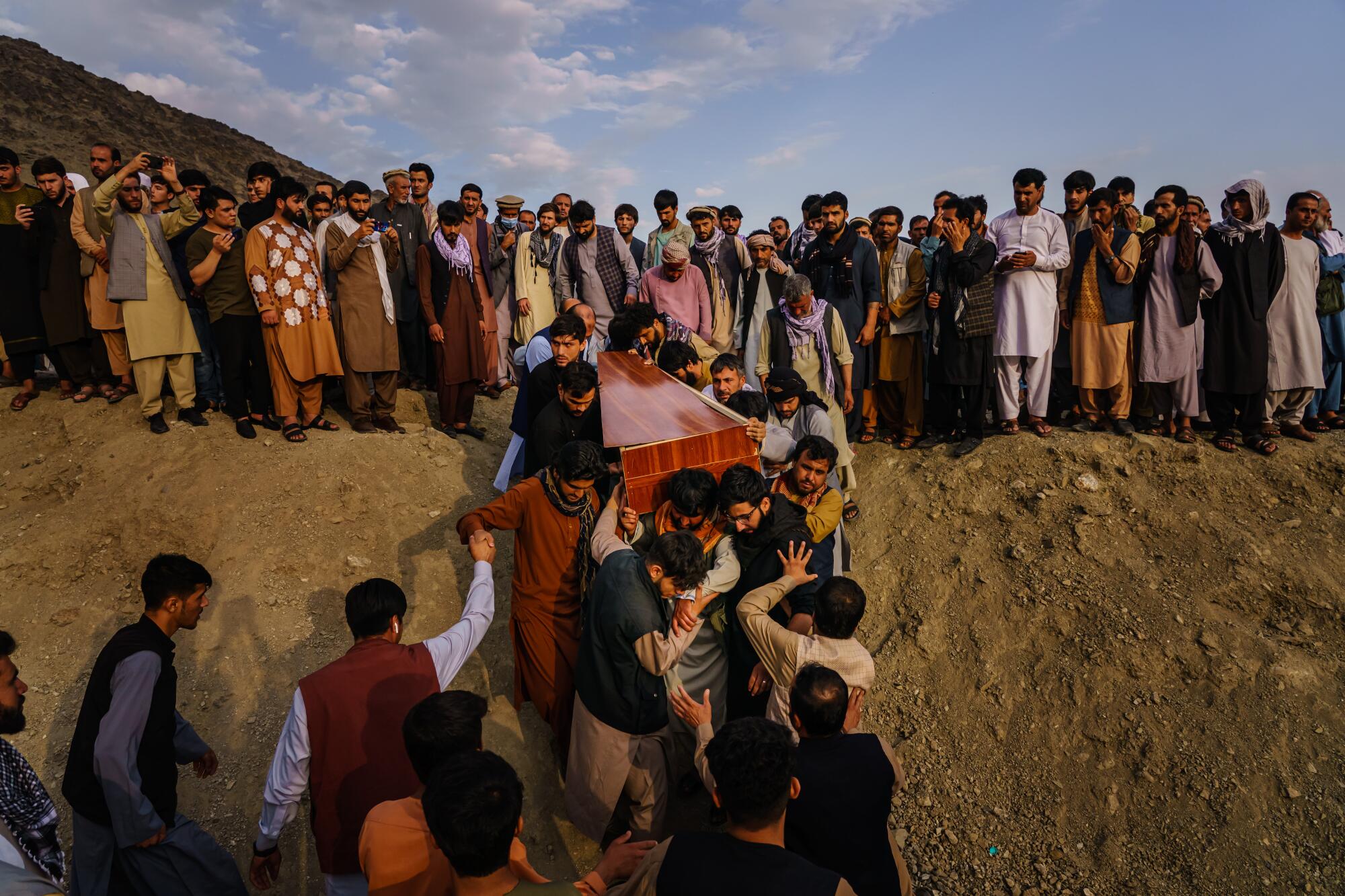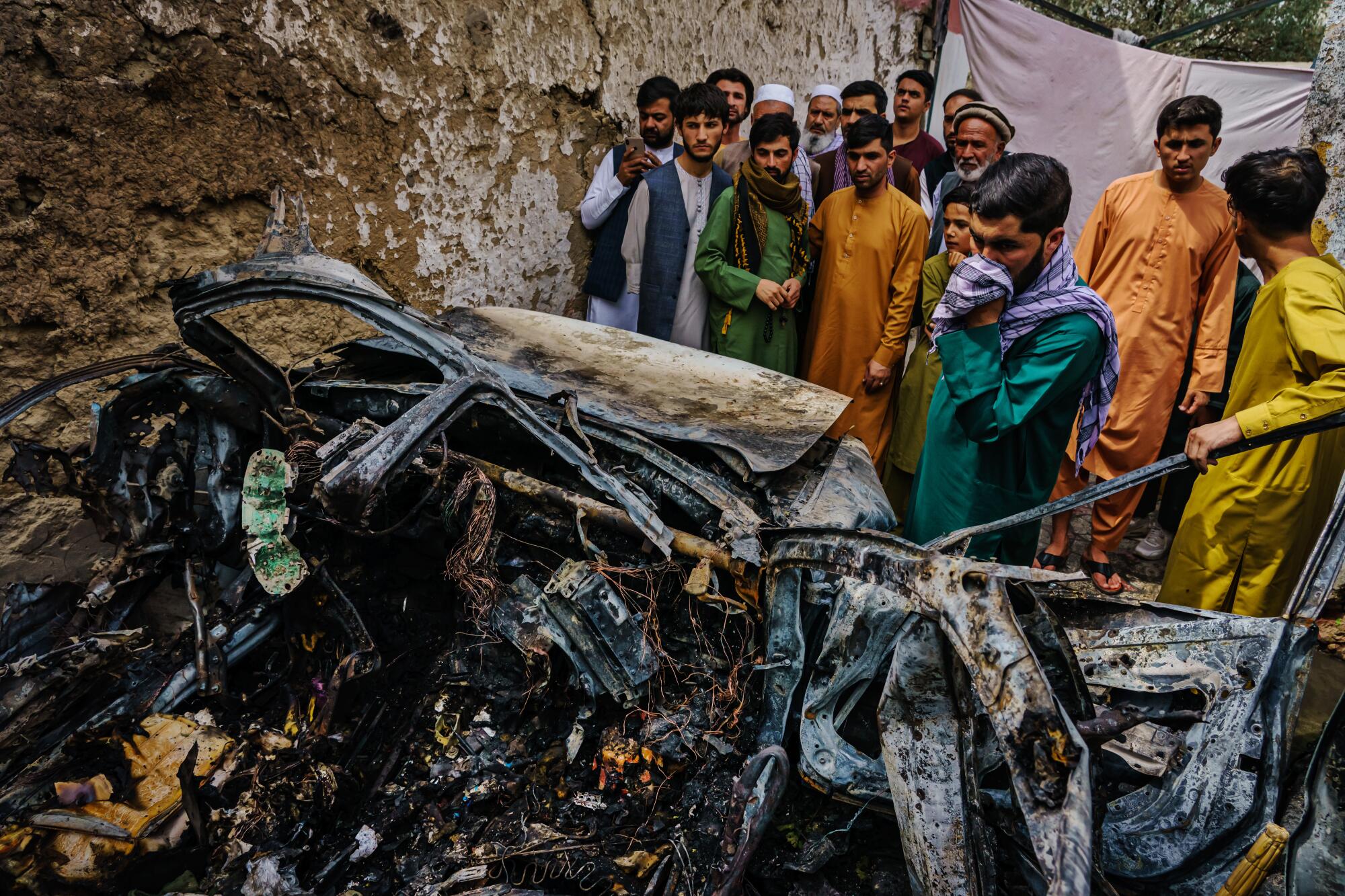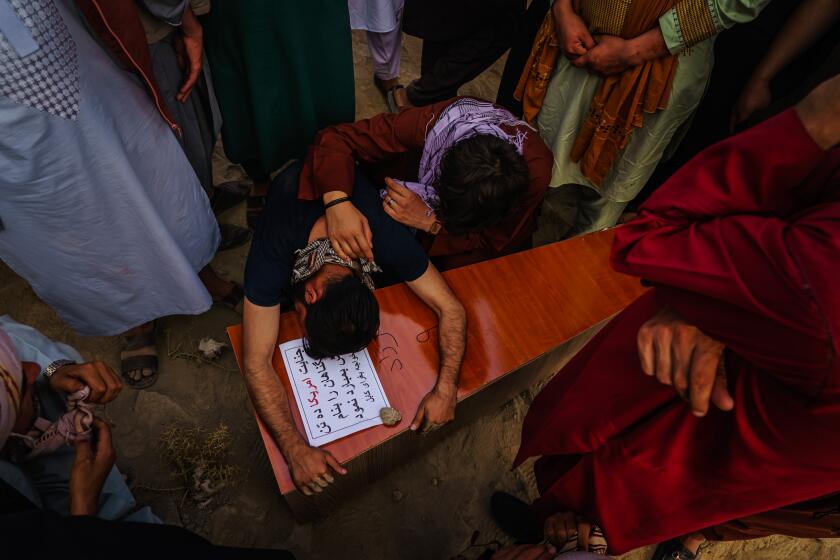- Share via
Emal Ahmadi’s brother, Zemari Ahmadi, an aid worker for a California-based charity, was returning to his home two miles west of the besieged Kabul airport when a U.S. Hellfire missile struck his car. The explosion killed him, two other adults and seven of his children, nephews and nieces.
- Share via
WASHINGTON — The U.S. military on Friday acknowledged its last airstrike in Afghanistan before the U.S. withdrawal was a “tragic mistake” that killed 10 civilians, including seven children, in what was a tragic coda to a messy and controversial 20-year war.
Gen. Kenneth F. McKenzie Jr., head of U.S. Central Command, which oversees the Afghanistan operation, said in a news conference late Friday that an investigation by the Army confirmed last month’s drone attack did not kill any terrorists, reversing the position of the Pentagon.
“The strike was taken in the earnest belief that it would prevent an imminent threat to our forces in the evacuation at the airport,” McKenzie said, adding that the military would explore giving reparation money to the surviving family members of the victims. “But it was a mistake. And I offer my sincere apology.”

The strike took place Aug. 29, when a U.S. drone aircraft fired a Hellfire missile at a white Toyota Corolla being driven by Zemari Ahmadi, an aid worker for a California-based charity. He was returning to his home two miles west of the besieged Kabul airport. The explosion killed him, two other adults and seven of his children, nephews and nieces. Five of the victims were 5 or younger.
Ahmadi, 40, had worked for 16 years for a California-based charity organization, Nutrition & Education International in Pasadena, according to surviving family members interviewed by The Times.
Defense Secretary Lloyd J. Austin III issued a statement apologizing for “a horrible mistake” and declaring that there were no links between Ahmadi and an Afghan-based offshoot of Islamic State, known as ISIS in Khorasan, or ISIS-K. U.S. officials have asserted that ISIS-K was responsible for a suicide bombing that killed 13 U.S. service members three days before the drone strike.
Ahmadi’s activities on the day of the strike were “completely harmless and not at all related to the imminent threat we believed we faced,” Austin said.
President Biden says the counter-terrorism mission in Afghanistan will continue. Experts say it’s going to be much harder.
The strike came amid a chaotic withdrawal by U.S. and NATO military forces that required a massive airlift of fleeing U.S. citizens and panicked, endangered Afghans through the Kabul airport. The U.S. eventually evacuated 124,000 people in the days after the Taliban entered the city and completed its takeover of the country.
The Taliban, an extremist group ousted from power by the U.S. shortly after the Sept. 11, 2001, terrorist attacks, offered nominal and spotty security around the airport.
Thirteen U.S. servicemen and -women, posted on the periphery of the airport and involved in the evacuation, were killed Aug. 26 in what officials said was a suicide bombing perpetrated by ISIS-K. The bombing, which also killed nearly 200 Afghans, heightened alarm within the U.S. military.
A day after the airport bombing, the U.S. launched a drone strike on a purported ISIS-K militant in Afghanistan’s Nangarhar province. An alleged militant was killed, the Pentagon said. That incident will not be reviewed, Pentagon spokesman John Kirby said Friday.
Members of an Afghan family and the U.S. military recount a massive explosion in Kabul on Sunday.
Meanwhile, U.S. officials were warning of serious threats at the airport, with President Biden on Aug. 28 saying another terrorist attack was “highly likely.” The next day, the U.S. fired the missile that killed the 10 civilians. When The Times and other organizations revealed civilians were among the victims, the Pentagon launched an investigation.

McKenzie offered a detailed explanation of how U.S. military intelligence was tracking Ahmadi’s white Corolla as he made his rounds, taking people to and from work and transporting humanitarian supplies such as water bottles.
McKenzie said officers analyzing video feeds — along with what the general described as 60 other “high-caliber” reports across Kabul detailing suspicious behavior and actions — concluded Ahmadi’s movements constituted a likely terrorist threat.

McKenzie added that the decision to fire the missile was made by an officer in theater, though not in Afghanistan.
He said the mistake did not involve confusing Ahmadi’s car for another vehicle. Instead, the general said, the military had been focused on Ahmadi’s car, having received reports of a suspicious vehicle matching the description.
“Clearly our intelligence was wrong on this particular white Toyota Corolla,” he said.
Gen. Mark A. Milley, chairman of the Joint Chiefs of Staff, told reporters two days after the attack that it appeared to have been a “righteous” strike and that at least one of the people killed was a “facilitator” for ISIS-K.
“This is a horrible tragedy of war and it’s heart-wrenching,” Milley told reporters traveling with him in Europe, according to the Associated Press. “We are committed to being fully transparent about this incident.”
The mistake highlights the problems the U.S. will face in fighting terrorism in a country where it no longer has a presence, forcing it to rely on “over-the-horizon” counter-terrorism measures.
McKenzie acknowledged the U.S. had no personnel on the ground who might have helped ensure the strike did not endanger civilians. He asserted the military would take steps to ensure there was time to analyze intelligence before future strikes.
“I don’t think you should draw any conclusions about our ability to strike in Afghanistan against ISIS-K targets in the future based on this particular strike,” McKenzie said.

Rep. Adam B. Schiff (D-Burbank), who chairs the House Intelligence Committee, said that the U.S. military deserved credit for coming clean by acknowledging a mistake with “horrific consequences” but that additional measures should be taken.
“After such a devastating failure,” Schiff said in a statement, “it cannot be the last step. We need to know what went wrong in the hours and minutes leading up to the strike to prevent similar tragedies in the future.”
Times reporters were among the first journalists to reach the scene and described the carnage. So many children died because they had apparently swarmed around Ahmadi’s car as he pulled into the driveway.
What remained of the Corolla was a blackened, incinerated heap of metal, melted plastic and pieces of what appeared to be human flesh and a tooth, The Times reported. Near the passenger’s side was a hole where a projectile had punched through.
More to Read
Sign up for Essential California
The most important California stories and recommendations in your inbox every morning.
You may occasionally receive promotional content from the Los Angeles Times.


















